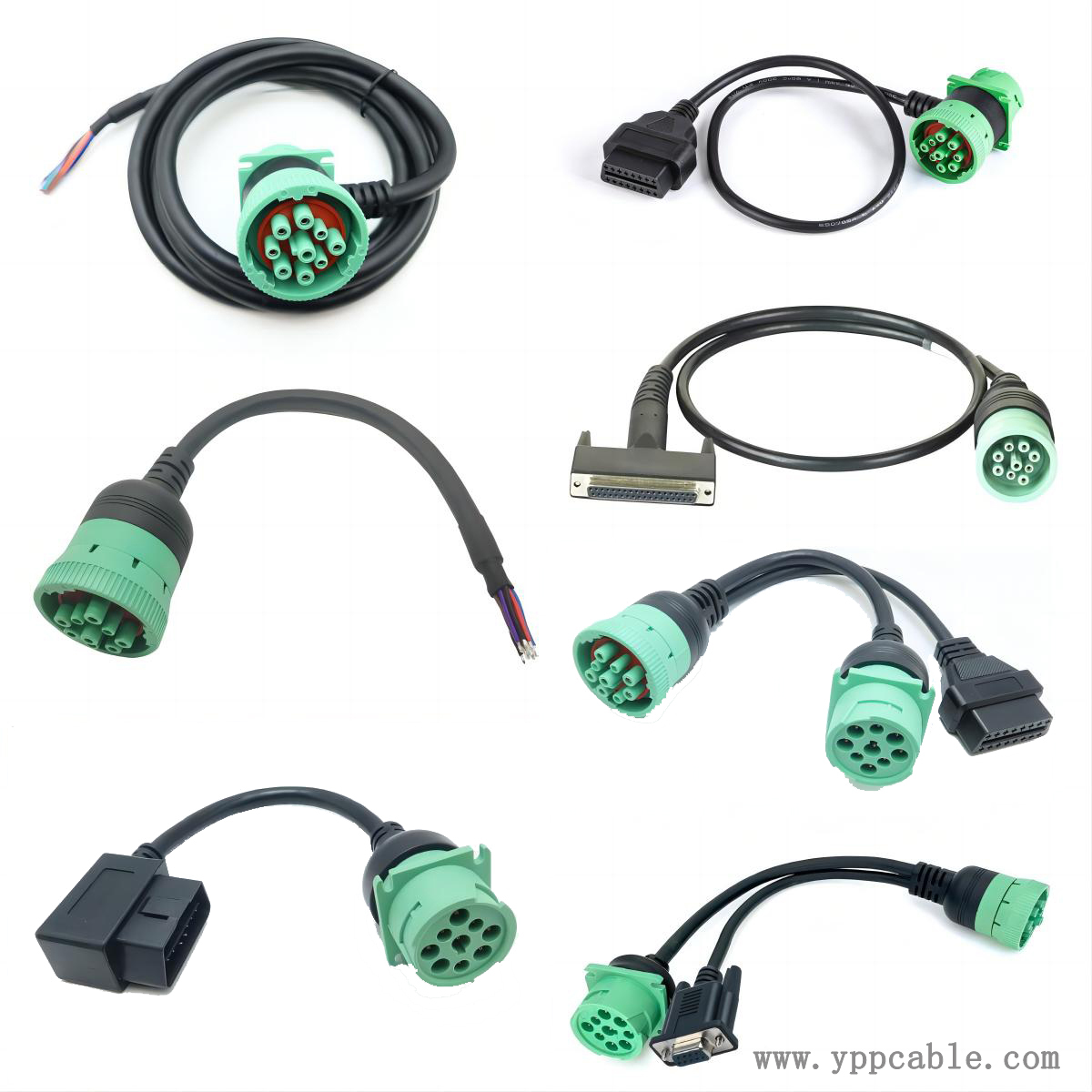J1939 to OBD2 cable protocol deep adaptation: solving the communication standard differences between commercial and passenger vehicles
The J1939 to OBD2 cable has the core advantage of deep protocol adaptation in commercial vehicle diagnosis and data exchange scenarios. The specific analysis is as follows:

The specificity of J1939 protocol
J1939 is a commercial vehicle specific protocol based on CAN 2.0B extension, using a 29 bit identifier (ID), supporting multi parameter array transmission (PGN) and complex network management functions. Its message structure includes fields such as priority (P), data page (DP), PDU format (PF), etc., which can achieve advanced functions such as engine control, fault diagnosis, and fleet management.
Example: J1939 transmits data through PGN 61444 (engine speed), while traditional OBD2 only supports PID 0C, with insufficient accuracy and scalability.
Limitations of OBD2 protocol
OBD2 is mainly designed for passenger cars, using an 11 digit ID and standardized PID, covering only emission related basic parameters such as vehicle speed, engine speed, coolant temperature, etc. Its data transmission rate is usually 250kbps, which cannot meet the high-speed and real-time control requirements of commercial vehicles.
The protocol bridging function of the conversion cable
The J1939 to OBD2 cable achieves bidirectional protocol conversion through hardware (such as CAN transceiver) and software (protocol stack):
J1939 → OBD2: Map commercial vehicle specific parameters to OBD2 compatible format for universal diagnostic instruments to read.
OBD2 → J1939: Supports triggering J1939 diagnostic services through the OBD2 interface (such as reading DM1 fault codes and clearing DM2 fault codes).
Contact: Kevin Yu
Phone:
E-mail: yppcable@126.com
Whatsapp:
Add: FL2,Bld 6, Hongte Industrial Park, Yongtou , Changan, Dongguan, Guangdong